The southern hemisphere constellations have long been sources of wonder and intrigue, captivating the imagination of humanity for centuries. These celestial patterns hold deep mythological significance, with each constellation telling a unique story that offers a glimpse into the rich tapestry of cultures that have gazed upon the southern skies. From Orion, the mighty hunter, to the enigmatic Lupus constellation, the southern hemisphere is home to a constellation of captivating tales. Join us on a journey through the mythology behind these celestial wonders, as we unravel the ancient stories that have shaped our understanding of the stars above.
Contents
- The Mythology of Orion
- The Legend of Centaurus
- The Southern Cross and Its Story
- The Mythical Journey of Pegasus
- The Enigmatic Lupus Constellation
- The Majestic Phoenix
- Delving into Hydra’s Mythology
- The Mysterious Ara Constellation
- The Fascination of the Southern Fish
- Crux Australis: The Southern Cross
- The Mythology of Eridanus
- The Story of Sagittarius
- Conclusion
-
Frequently Asked Questions
- 1. How did the constellations in the southern hemisphere get their names?
- 2. Are the southern hemisphere constellations visible all year round?
- 3. What is the significance of the Orion constellation in different cultures?
- 4. Can the southern hemisphere constellations be seen from the northern hemisphere?
- 5. Are there any famous stars within the southern hemisphere constellations?
- 6. How were the myths and legends associated with the southern hemisphere constellations passed down through generations?
- 7. Are there any scientific discoveries linked to the southern hemisphere constellations?
- 8. Are there any modern-day cultural celebrations or festivals associated with the southern hemisphere constellations?
- 9. How can I locate and identify the southern hemisphere constellations?
- 10. What is the cultural significance of the southern hemisphere constellations today?
- References
-
Frequently Asked Questions
- What are constellations?
- Where can I see the Southern Hemisphere constellations?
- What is the mythology behind Orion?
- Who is Centaurus in mythology?
- What is the story behind the Southern Cross?
- What is the significance of Pegasus in mythology?
- What is the symbolism of the Phoenix constellation?
- What is the story behind the Hydra constellation?
- What is the mythological significance of the Ara constellation?
- What is the story behind the Crux Australis (Southern Cross) constellation?
- References
- Read More
The Mythology of Orion

Orion, one of the most recognizable constellations in the night sky, has a fascinating mythology that has captivated cultures across the globe. In Greek mythology, Orion was believed to be a mighty hunter, known for his exceptional skill and prowess. The story of Orion tells of his encounter with the goddess Artemis, who became infatuated with him. However, Orion’s fate took a tragic turn when he was stung by a scorpion and fatally wounded. Legend has it that Zeus, the king of the gods, placed both Orion and the scorpion in the night sky as a tribute to their epic battle. Another intriguing myth surrounding Orion is the origin of his iconic belt. According to one Greek myth, Orion received his distinctive belt as a gift from Poseidon, the god of the sea. This belt served as a symbol of his status and power as a hunter. The mythology of Orion highlights the eternal allure of the night sky and the timeless stories that connect us to the celestial realm.
The Hunter’s Tale
In the mythological tale of Orion, the mighty hunter, his story is one filled with adventure and tragedy. According to Greek mythology, Orion was born to the sea god Poseidon and the mortal Euryale. From a young age, Orion displayed exceptional hunting skills and became known as one of the greatest hunters in the world. He was depicted as a tall and powerful figure, carrying a club and a bow, ready to face any challenge that came his way. However, it was his encounter with the goddess Artemis that would shape his destiny. Upon meeting Orion, Artemis, who was known to be the protector and deity of the natural world, was captivated by his strength and charm. Some versions of the myth suggest that the two became hunting companions and developed a close bond, while others hint at a romantic relationship. Nonetheless, this bond drew the ire of Artemis’s brother, Apollo, who grew jealous of Orion’s presence in his sister’s life. Apollo devised a plan to rid Artemis of Orion, and he challenged her to prove her archery skills by shooting at a small object floating in the sea. Unbeknownst to Artemis, the object was actually Orion’s head bobbing above the water. As Artemis took the shot, she accidentally struck and killed Orion, unaware of the true identity of her target. Devastated by her actions, Artemis placed Orion among the stars, immortalizing him as a constellation in the night sky. The tale of Orion serves as a reminder of the complex relationships and fates that unfold in Greek mythology, as well as the enduring presence of these stories in our celestial observations.
The Origin of Orion’s Belt
In the mythology surrounding Orion, his iconic belt holds a special significance and an intriguing origin story. According to Greek mythology, Orion received his belt as a gift from Poseidon, the god of the sea. The belt was said to be made of gleaming gold and adorned with precious gems, representing Orion’s exceptional hunting skills and his connection to the divine. The story goes that Orion caught the attention of Poseidon with his remarkable talent as a hunter, and in recognition of his prowess, Poseidon crafted this celestial belt for him. This gift symbolized Orion’s status and power, distinguishing him as a mighty figure in the heavens. The three stars that make up Orion’s Belt are named Alnitak, Alnilam, and Mintaka, and they continue to shine brightly as a reminder of the hunter’s legendary tale. The presence of Orion and his magnificent belt in the night sky serves as a reminder of humanity’s fascination with the stars and the captivating mythologies that have shaped our perception of the celestial realm.
The Legend of Centaurus
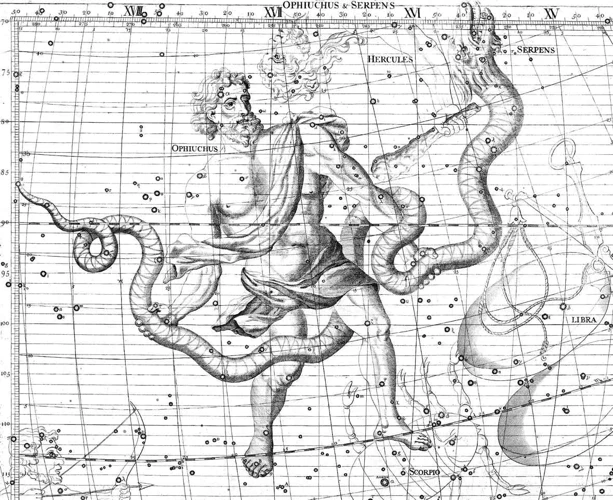
In the realm of southern hemisphere constellations, Centaurus stands out with its mythical origins and fascinating tales. In Greek mythology, Centaurus is associated with the legendary creature known as Chiron. Chiron was a wise centaur, a half-human and half-horse hybrid, known for his exceptional knowledge and teaching abilities. Chiron was revered as a mentor to many heroes, including Hercules and Jason. The story goes that Chiron was accidentally wounded by Hercules with a poisoned arrow. Being immortal, he endured immense pain until Prometheus offered to exchange his immortality for Chiron’s release. Chiron willingly accepted this offer, sacrificing himself for the greater good. In the night sky, Centaurus pays homage to the noble and wise Chiron, serving as a reminder of the transformative power of sacrifice and the indelible impact of a knowledgeable mentor.
Centaurus and Chiron
The constellation Centaurus holds a significant place in mythology, as it is associated with the centaur Chiron. In Greek mythology, Chiron was a wise and noble centaur known for his exceptional knowledge and healing abilities. He was revered as a mentor and teacher to many renowned heroes, including Achilles and Jason. Chiron’s story is closely intertwined with the constellation Centaurus, as he is believed to be its namesake. According to the myth, Chiron was accidentally wounded by a poisoned arrow and endured immense pain due to his immortal nature. In an act of selflessness, Chiron made a deal with Zeus to take his place and release him from his torment. As a result, Chiron became a constellation in the night sky, immortalizing his noble sacrifice and wisdom. The story of Centaurus and Chiron serves as a reminder of the enduring power of knowledge and the willingness to make sacrifices for the greater good. It is a testament to the profound impact that mythological figures have had on the human psyche throughout history.
The Centaur’s Connection
The Centaur’s Connection is a significant aspect of the mythology surrounding the constellation of Centaurus. In Greek mythology, Centaurus represents the half-human, half-horse creatures known as centaurs. These mythical beings were often depicted as wild and untamed, symbolizing the duality of man’s nature. The connection between the constellation Centaurus and centaurs extends beyond just their appearance. One of the most famous centaurs, Chiron, has a prominent role in the mythology associated with Centaurus. Chiron was known for being wise, skilled in medicine, and a renowned mentor to many Greek heroes, including Achilles and Jason. However, unlike other centaurs who were known for their unruly behavior, Chiron was regarded as a wise and civilized creature. This juxtaposition between the savage and the wise is reflected in the constellation Centaurus, representing the continuous struggle between our primal instincts and our higher consciousness. The presence of Centaurus in the night sky serves as a reminder of the complex nature of humanity and the constant quest for balance and enlightenment in our lives.
The Southern Cross and Its Story

The Southern Cross, also known as Crux Australis, holds a special place in the mythology of the southern hemisphere. This distinctive constellation, consisting of four bright stars in the shape of a cross, has been an important navigational tool for centuries. In many cultures, the Southern Cross is seen as a symbol of navigation and exploration. One of the most famous stories associated with the Southern Cross is the tale of two star-crossed lovers, who were transformed into stars in the night sky. According to the ancient Greek myth, the lovers, Iphicles and Erigone, were separated by the gods and placed among the stars as a constellation. Their eternal presence in the night sky represents their undying love and serves as a reminder of the enduring power of love itself. The Southern Cross and its story showcase the profound connections between the celestial and the human, as well as the timeless allure of the night sky.
In the mythology of the Southern Cross, one prominent aspect stands out: its symbolism as a navigational tool. The Southern Cross, also known as Crux Australis, has been utilized by sailors and explorers for centuries in the southern hemisphere. Due to its distinctive shape, the Southern Cross served as a reliable guide to navigate the vast oceans and discover new lands. Sailors would use the constellation to determine their latitude and calculate their position. By aligning the top star of the Southern Cross, known as Alpha Crucis, with the South Pole, sailors could plot their course and ensure they were on the right track. This celestial navigation technique was crucial during times when the use of modern instruments was limited or unavailable. The Southern Cross’s significance as a symbol of navigation extends beyond physical exploration; it represents the human desire for discovery and the courage to venture into the unknown. Today, the Southern Cross continues to inspire wanderlust and serves as a reminder of humanity’s enduring spirit of exploration.
The Star Crossed Lovers
In the mythology of the Southern Cross constellation, there exists a captivating tale of love and tragedy known as “The Star Crossed Lovers.” According to this myth, two young indigenous lovers, who belonged to different tribes, were forbidden to be together due to their feuding nations. However, their love for each other was so strong that they defied their families and tribes, meeting in secret beneath the Southern Cross. As a symbol of their forbidden love, the gods transformed the couple into stars and placed them in the night sky where they would forever be seen together. These stars are now known as Alpha and Beta Centauri, which form part of the Southern Cross constellation. The story of “The Star Crossed Lovers” serves as a reminder of the power of love, even in the face of adversity, and stands as a testament to the enduring impact of celestial mythology on human culture.
The Mythical Journey of Pegasus

The mythical journey of Pegasus, the winged horse, traces its roots back to Greek mythology. Pegasus was born from the blood of the Gorgon Medusa, slain by the hero Perseus. With its majestic wings, Pegasus soared through the skies, carrying heroes such as Perseus and Bellerophon on their quests. In one famous tale, Pegasus aided Bellerophon in his mission to slay the dreaded Chimera, a fearsome creature with the body of a lion, the head of a goat, and the tail of a serpent. It was Pegasus who gave Bellerophon the advantage he needed, allowing him to vanquish the formidable beast. Pegasus symbolizes not only the power of flight but also the bond between humans and animals in ancient mythology. Its mythical journey continues to inspire wonder and awe, reminding us of the extraordinary creatures that inhabit our imaginations and the boundless possibilities of the human spirit.
Pegasus and Perseus
In the realm of Greek mythology, the story of Pegasus and Perseus intertwines, creating a captivating tale of heroism and wonder. Perseus, the son of Zeus and Danae, was a courageous hero who embarked on a perilous quest to slay the Medusa, a monstrous creature with snakes for hair. It was during this quest that Perseus encountered the winged horse, Pegasus. Born from the blood of the decapitated Gorgon, Pegasus emerged as a majestic and loyal companion to Perseus. With Pegasus’s aid, Perseus managed to successfully defeat the Medusa and use her severed head as a weapon. The duo went on to complete numerous heroic feats together, including rescuing Princess Andromeda from a sea monster. The bond between Perseus and Pegasus symbolizes the harmonious partnership between humanity and the supernatural, highlighting the extraordinary possibilities that can arise when mortals and mythical creatures unite in their endeavors. Today, the constellation of Pegasus serves as a reminder of this legendary alliance, inspiring us to harness our own inner strength and soar to new heights.
Link: exploring the dynamics between Gemini and Sagittarius
Pegasus and Bellerophon
In Greek mythology, the connection between Pegasus and Bellerophon is a captivating tale of adventure and heroism. Pegasus, the magnificent winged horse, was born from the severed neck of the Gorgon Medusa. With his majestic wings and incredible speed, Pegasus became a symbol of freedom and power. Bellerophon, a mortal hero, sought to tame and ride Pegasus. According to the myth, Bellerophon was aided by the goddess Athena, who presented him with a golden bridle to control the wild horse. With his newfound companion, Bellerophon embarked on a series of heroic quests, including the slaying of the fire-breathing monster, Chimaera. However, Bellerophon’s pride got the better of him, and he attempted to ride Pegasus to reach Mount Olympus, the realm of the gods. This act of hubris angered Zeus, who sent a gadfly to sting Pegasus, causing Bellerophon to fall to Earth. Despite his downfall, Pegasus was immortalized in the night sky as a constellation, reminding us of the power and consequences of human ambition. The story of Pegasus and Bellerophon serves as a cautionary tale, highlighting the delicate balance between mortal desires and divine fate.
The Enigmatic Lupus Constellation
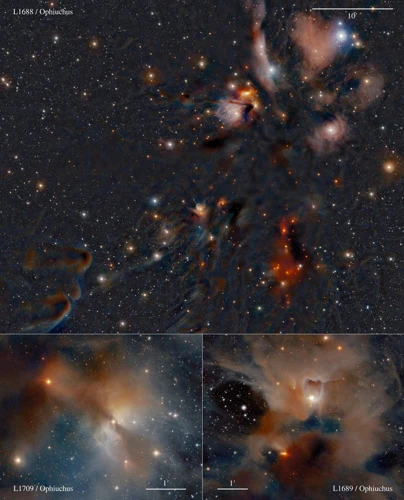
Lupus, the enigmatic constellation of the southern hemisphere, has a rich mythology that dates back centuries. In Greek mythology, Lupus represents a ferocious wolf, although its precise origin and stories surrounding it are shrouded in mystery. In some legends, Lupus is connected to the constellation Centaurus, representing the Centaur’s magnificent hunting dog. Another myth suggests that Lupus was a loyal companion to Orion, the legendary hunter. The symbolism of Lupus varies across different cultures, with some associating it with themes of loyalty and protection, while others see it as a symbol of wildness and unpredictability. However, despite its elusive nature, Lupus continues to fascinate astronomers and stargazers alike, adding an air of intrigue to the celestial landscape.
Lupus, the Wolf
In the realm of southern hemisphere constellations, Lupus, the Wolf, takes center stage. The Lupus constellation is often associated with the mythical wolf that played a significant role in various cultures’ folklore. In Greek mythology, Lupus represented the wolf slain by the great hunter Orion, forever immortalized in the night sky. According to the myth, the goddess Artemis sent a scorpion to challenge Orion’s skill as a hunter. In a fierce battle, Orion succumbed to the scorpion’s sting, and both were placed among the stars by Zeus. However, other cultures have also interpreted the Lupus constellation differently. Some indigenous Australian cultures saw Lupus as a kangaroo or wallaby instead of a wolf. These alternative interpretations serve as a reminder of the diverse perspectives and stories associated with the celestial wonders above us. The mythology of Lupus, whether representing a wolf or another creature, adds depth and intrigue to the southern hemisphere’s enchanting night sky.
Lupus and the Centaurs
Lupus, the Latin word for “wolf,” is a fascinating constellation in the southern hemisphere sky. In Greek mythology, Lupus is associated with the centaurs, mythical creatures with the upper body of a human and the lower body of a horse. According to one legend, Lupus was originally a centaur who had been transformed into a wolf by Zeus, after the centaurs caused chaos and destruction. This transformation served as a punishment for their wild and uncontrollable nature. The story goes that Lupus joined forces with the centaurs in their battle against Hercules, during which Hercules defeated and scattered the centaurs across the night sky. In some versions of the myth, Lupus is depicted as a slain centaur, forever frozen in the stars as a wolf. This celestial connection between Lupus and the centaurs serves as a reminder of the mythological conflicts and consequences that were believed to shape the world. The story of Lupus and the centaurs adds another layer of intrigue to the tapestry of southern hemisphere constellations, leaving us in awe of the ancient tales that continue to illuminate the night sky.
The Majestic Phoenix
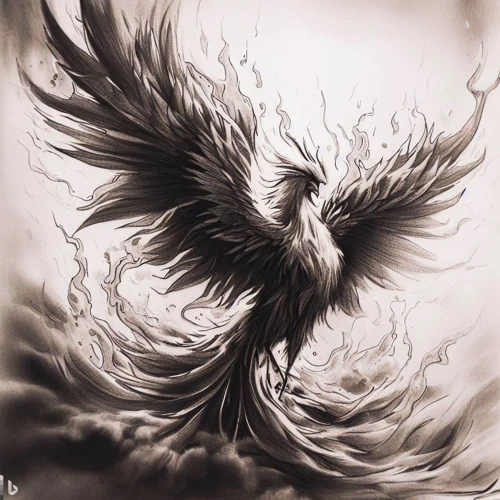
The majestic Phoenix, a prominent constellation in the southern hemisphere, holds a mythical allure that spans cultures throughout history. In Greek mythology, the Phoenix is a legendary bird associated with rebirth and renewal. According to the ancient tales, the Phoenix lives for centuries before it sets itself ablaze, only to rise from its own ashes, rejuvenated and renewed. This cycle of death and rebirth has made the Phoenix a powerful symbol of transformation and resilience. In Egyptian mythology, the Phoenix, known as the Bennu, was closely connected to the sun god Ra and was believed to usher in a new era by rising from the chaos. The symbolism of the Phoenix as a harbinger of new beginnings continues to resonate across different cultures around the world. Its presence in the night sky reminds us of the eternal cycle of life, death, and rebirth, offering a sense of hope and inspiration to those who gaze upon it.
The Bird of Rebirth
In the realm of southern hemisphere constellations, the Phoenix stands as a symbol of rebirth and renewal. This majestic bird is said to have the ability to rise from the ashes, rejuvenating itself in a spectacular display of transformation. The mythology of the Phoenix dates back to ancient Egyptian and Greek civilizations, where it was associated with the sun god Ra and the goddess of the sun, Phoebe, respectively. According to legend, the Phoenix would live for hundreds of years before its fiery death, only to be born again from its own remains. This cycle of death and rebirth represented the eternal nature of life and the power of renewal. The Phoenix’s mythological significance is not limited to ancient cultures, as it continues to inspire and resonate with individuals today. Its symbolism of overcoming adversity and embracing change is often seen as a guiding light in personal growth and transformation. The Bird of Rebirth reminds us that even in the face of destruction and loss, new beginnings are possible, and from the ashes, we can rise stronger than ever before.
The Legends of the Phoenix
The Legends of the Phoenix are steeped in ancient mythology and carry a powerful symbol of rebirth and renewal. The phoenix, a mythical bird, is often depicted as vibrant, fiery, and magnificent. According to the legends, the phoenix is said to live for hundreds of years before engulfing itself in flames, only to rise from its own ashes in a glorious rebirth. This symbolism of death and resurrection has captured the imagination of cultures around the world. In Greek mythology, the phoenix is associated with the sun and was believed to be a sacred bird that resided in the kingdom of Hyperion, the Titan god of light. It was believed that the phoenix possessed the power to heal and grant immortality. In many Eastern cultures, the phoenix is revered as a symbol of virtue, grace, and opportunity. Its majestic presence represents strength, resilience, and the cyclical nature of life. The legends surrounding the phoenix inspire hope and remind us that even in the face of destruction, there is always the possibility of transformation and new beginnings. The symbolism of the phoenix continues to resonate with individuals on a personal level, serving as a reminder of the human capacity for renewal and the endurance of the human spirit.
Delving into Hydra’s Mythology
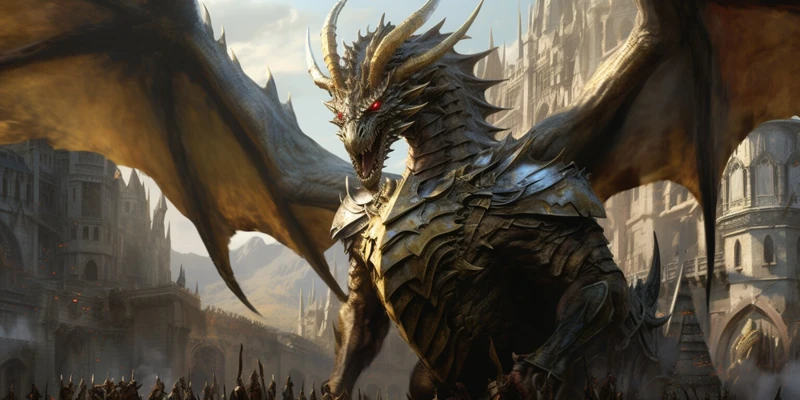
Delving into the mythology of Hydra, we uncover a rich tapestry of ancient stories that have shaped our understanding of this enigmatic constellation. In Greek mythology, Hydra is often associated with the Lernaean Hydra, a terrifying water serpent slain by the hero Hercules as one of his twelve labors. According to the myth, the Hydra possessed multiple heads that grew back when severed, making it an incredibly formidable opponent. This symbolism of regeneration and rebirth is reflected in the constellation’s placement in the night sky. In astrological interpretations, Hydra is often associated with the concept of transformation and the powerful forces of change. The mythology of Hydra reminds us of the eternal struggle between light and darkness, and the inherent power within us to overcome challenges and emerge stronger than before. This constellation offers a profound exploration of the human experience, inviting us to embrace the complexities of life and navigate our own personal journeys with courage and resilience.
The Serpent’s Origin
In the realm of southern hemisphere constellations, the enigmatic constellation of Hydra, the serpent, holds a fascinating origin story. In Greek mythology, the Hydra was said to be a powerful and fearsome creature with multiple heads. According to the myth, the Hydra came into existence when the goddess Hera, wife of Zeus, sent a water serpent to attack Hercules, the renowned hero. With its venomous breath and regenerative abilities, the Hydra proved to be a formidable adversary for Hercules. However, as Hercules engaged in battle with the Hydra, he soon realized that every time he severed one of its heads, two more would grow back in its place. It was only through the help of his nephew, Iolaus, that Hercules was able to defeat the Hydra. As Hercules decapitated the creature’s heads, Iolaus cauterized the stumps, preventing any further heads from regenerating. In the end, Hercules managed to defeat the Hydra, but its origin as a formidable foe and its ability to grow multiple heads make it a captivating figure in mythology. Today, the constellation Hydra serves as a reminder of this legendary battle and the triumph of Hercules over the monstrous serpent.
The Mythological Hydras
In Greek mythology, the Hydra is a mythical creature associated with water and often depicted as a multi-headed serpent-like beast. The Hydra has a prominent presence in Greek legends and plays a significant role in the story of Hercules. According to the myth, the Hydra was an insidious creature that terrorized the marshes of Lerna. It possessed many heads, and every time one was severed, two more would grow in its place. Its poisonous breath and venomous blood made it a formidable foe. Hercules’ second labor was to defeat the Hydra as part of his Twelve Labors. With the help of his nephew Iolaus, Hercules lured the Hydra out of its lair and began the battle. As Hercules fought the Hydra, it became apparent that cutting off the heads alone would be ineffective, as they would continue to grow. To overcome this challenge, Hercules cauterized each neck stump immediately after severing a head, effectively preventing further growth. In the end, Hercules emerged victorious, slaying the Hydra and completing another of his legendary feats. The Hydra represents a powerful and relentless force in the Greek mythological world. While Hercules was able to conquer it, the Hydra serves as a symbol of the constant challenges and obstacles that heroes and mortals alike must confront in their own journeys.
The Mysterious Ara Constellation
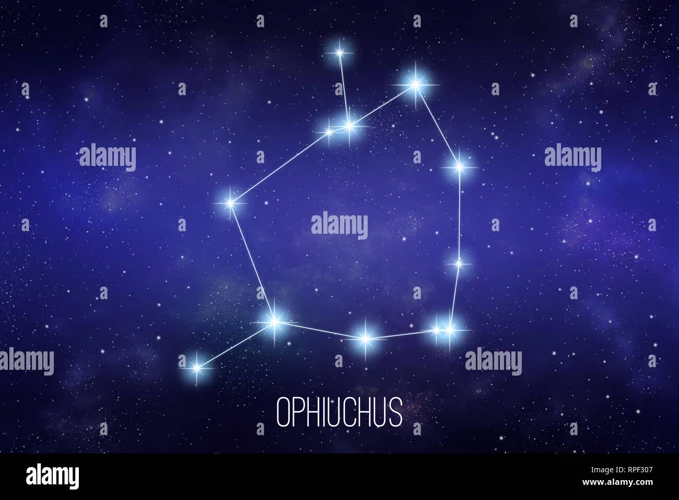
The Ara constellation, also known as the Altar of the Gods, is a mysterious and intriguing constellation in the southern hemisphere sky. In Greek mythology, Ara is associated with the story of Iphigenia, the daughter of Agamemnon. According to the legend, Iphigenia was offered as a sacrifice to the gods in order to ensure a successful voyage to Troy during the Trojan War. However, just as the sacrificial ritual was about to take place, the goddess Artemis intervened and whisked Iphigenia away, replacing her with a deer. As a result, Iphigenia was spared and was transported to the land of the gods, where she became the priestess of Artemis. The constellation Ara serves as a reminder of this mythical sacrifice and the power of the gods. It is a testament to the enduring tales that shape our understanding of the celestial wonders above.
The Altar of the Gods
In the southern hemisphere, there exists a constellation known as Ara, which is also referred to as “The Altar of the Gods.” In ancient Greek mythology, Ara was associated with the altar where the gods would make offerings and receive sacrifices from mortal beings. This celestial altar was believed to bridge the gap between the mortal realm and the divine, serving as a sacred place of communication and interaction between humans and gods. The constellation Ara is located near the Southern Cross (Crux Australis), and its position in the southern skies adds to its mystique and significance. In various cultures, Ara has been interpreted differently, but its association with spirituality and worship remains consistent. It serves as a reminder of the eternal connection between humanity and the divine realm, inviting us to contemplate our place in the universe and the power of our beliefs.
The Sacrifice of Ara
In the realm of southern hemisphere constellations, Ara, also known as the Altar, stands as a celestial symbol of sacrifice and devotion. According to Greek mythology, Ara represents the altar used by the gods to make offerings during their feasts. However, the story of Ara goes beyond mere ceremonial significance. Ara’s mythology takes a heartbreaking turn when it is associated with the legend of Iphigenia. In this tale, Iphigenia was a young princess who was sacrificed by her own father, Agamemnon, as an offering to the goddess Artemis. To appease the vengeful deity and ensure favorable winds for the Greek fleet sailing to Troy, Iphigenia’s life was cruelly taken upon Ara’s altar. This tragic story serves as a reminder of the complex relationships between mortals and the divine, as well as the sacrifices made in the pursuit of power and victory. Ara’s placement in the night sky immortalizes the solemnity and weight of this sacrifice, reminding us of the profound choices humans are capable of making in the face of extraordinary circumstances. As we gaze upon the constellation Ara, we are reminded of the price that may be paid in the name of destiny and the enduring stories etched in the stars.
The Fascination of the Southern Fish
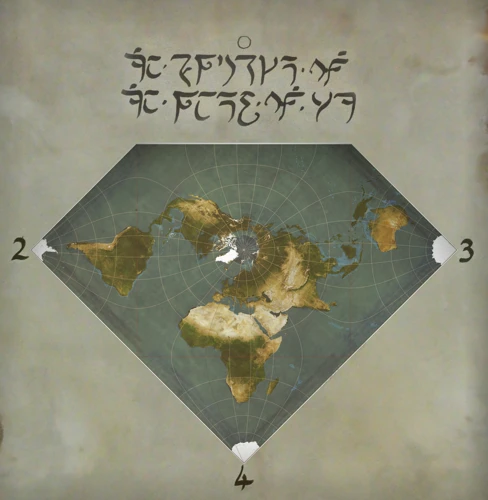
The Southern Fish, also known as Piscis Austrinus, has been a source of fascination for astronomers and mythologists alike. In Greek mythology, this constellation is associated with the goddess Aphrodite, who, in her escape from the monster Typhon, transformed herself into a fish and dived into the Euphrates River. The Southern Fish is often depicted as a beautiful and graceful creature, representing the goddess’s escape and rebirth. In astrology, the Southern Fish holds significance as well, symbolizing the depths of the subconscious and the mysteries of the emotional realm. It is said to be connected to the fifth house of the horoscope, which governs creativity, joy, and self-expression. Exploring the symbolism of the Southern Fish allows us to delve into the depths of our emotions and embrace the transformative power of the unconscious mind.
The Fish Goddess
In the southern hemisphere, one of the intriguing constellations is that of the Fish, known as Pisces. This constellation holds deep mythology, featuring a prominent figure known as the Fish Goddess. In ancient Mesopotamian mythology, the Fish Goddess was believed to be associated with the goddess Astarte, the deity of fertility, love, and war. She was often depicted as a fish-tailed goddess, symbolizing her connection to water and marine life. The Fish Goddess represented the abundance and life-giving qualities of water, which was essential for agricultural prosperity in ancient societies. This concept of the Fish Goddess as a symbol of fertility and nurturing can be traced back to the early civilizations along the Tigris and Euphrates rivers. The constellation of Pisces, with its depiction of the Fish Goddess, serves as a reminder of the deep reverence ancient cultures had for the bountiful waters and the essence of life it brought forth. It invites us to contemplate the interconnectedness of all beings and the vital role water plays in sustaining our existence.
The Fish of the Southern Skies
The Fish of the Southern Skies refers to the constellation known as Piscis Austrinus, which holds a significant place in mythology. In Greek mythology, this constellation is believed to represent the fish that carried Aphrodite and her son Eros to safety. The story goes that a fearsome monster called Typhon was threatening the gods and goddesses. To escape from Typhon’s wrath, Aphrodite and Eros transformed themselves into two fish and jumped into the Euphrates River. As a token of gratitude, the gods immortalized the fish by placing them among the stars. In another myth, Piscis Austrinus is associated with Dagon, an ancient Mesopotamian god of fertility and agriculture who was often depicted as half-man, half-fish. The constellation’s position near the south celestial pole means it is best visible from the southern hemisphere, where it appears as a small fish swimming in the cosmic sea. Those who gaze upon it can’t help but marvel at the interconnectedness of mythology and the celestial wonders that adorn our night sky.
Crux Australis: The Southern Cross
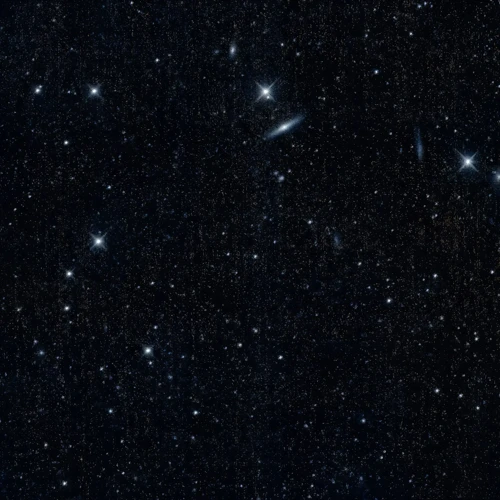
The Southern Cross, known as Crux Australis, is a celestial spectacle that has mesmerized civilizations for centuries. This prominent constellation, consisting of four main stars, holds great cultural and symbolic significance across different cultures. In terms of navigation, the Southern Cross serves as a valuable tool for sailors and travelers in the southern hemisphere, helping them navigate their way through uncharted waters. In addition to its practical use, the Southern Cross carries symbolic meaning as well. It is often associated with themes of guidance, fortitude, and divine intervention. In Indigenous Australian mythology, the Southern Cross represents the spirit of an emu, a celestial being that played a crucial role in the creation of the world. The stories and symbolism surrounding the Southern Cross highlight its enduring fascination and its ability to connect us to the mysteries of the universe.
The Cross’s Symbolism
The Southern Cross, also known as Crux Australis, holds great symbolism in various cultures and mythologies. One of the key aspects of the Cross’s symbolism is its association with navigation. For centuries, sailors have relied upon the Southern Cross as a guiding light to navigate the southern hemisphere. Its distinctive shape, formed by four bright stars, makes it easily recognizable and provides a fixed point of reference in the vast expanse of the night sky. The Southern Cross has also been regarded as a symbol of guidance and protection, with many cultures believing that it helps to lead lost souls or weary travelers on their journeys. The symbolism of the Southern Cross extends beyond navigation, as it represents unity and connection. In astronomy, the Southern Cross is a stellar association, where its stars orbit around a common center of gravity. This idea of interconnectedness and unity has been embraced in various cultural interpretations of the constellation. In Maori mythology, for example, the Southern Cross represents a family of stars, with each star representing a different family member. This symbolism highlights the importance of familial bonds and the close ties that bind us all together. The Southern Cross’s symbolism speaks to our innate desire for guidance, protection, and a sense of belonging in the vastness of the universe. By gazing upon this celestial marvel, we are reminded of our place in the cosmos and the universal threads that connect us all.
Crux Australis in Different Cultures
Crux Australis, commonly known as the Southern Cross, holds significance in various cultures around the world. In Australian Aboriginal mythology, the Southern Cross represents the celestial campfire of Djulpan, an ancestral figure who is associated with storytelling and law. The star formation serves as a navigational guide for the indigenous people of Australia, helping them determine directions and seasons. In Maori mythology, the Southern Cross is known as “Te Punga” or “Anchor,” symbolizing stability and a connection to the land. Maori navigators used the Southern Cross to aid them in their seafaring journeys. The Incans, on the other hand, associated the Southern Cross with a partridge constellation called “Chakana,” which represented the three levels of existence: the heavens, the earth, and the underworld. These cultural interpretations of the Southern Cross highlight its importance in navigation, stability, and cosmological beliefs. Its presence in different cultures reinforces the universal fascination with the stars and the diverse ways in which humans have connected with the night sky throughout history.
The Mythology of Eridanus

Eridanus, the constellation named after the river in Greek mythology, holds a rich mythological background that dates back to ancient times. According to the ancient Greeks, Eridanus represented the river that flowed from the heavens down to the underworld. Its mythological origins can be traced back to the story of Phaeton, the son of the sun god Helios. In this tale, Phaeton borrow
The River in the Sky
In the realm of southern hemisphere constellations, Eridanus stands out as a celestial marvel, portraying the imagery of a mighty river flowing across the night sky. Eridanus, also known as the River in the Sky, has deep roots in Greek mythology. According to legend, the river was believed to represent the river-god Eridanus, which was associated with the mythical river Po. The river was said to have originated from the tears of Phaeton, the son of the sun god Helios, who fell from the sky while attempting to drive his father’s chariot. This tragic event led to the creation of the river in the sky, symbolizing the cosmic connection between life and death. The importance of Eridanus in Greek culture is evident in its portrayal across various mythological narratives, serving as a reminder of the eternal cycle of existence. Today, the constellation Eridanus continues to fascinate stargazers and astronomers alike, serving as a celestial reminder of the profound and intricate stories woven into the fabric of the night sky.
Eridanus in Greco-Roman Legends
In Greco-Roman legends, the constellation Eridanus holds a prominent place within ancient mythology. It is believed to represent the river in the sky, often associated with the mythical river of the same name. According to the legend, Eridanus was formed by the tears of Phaeton, the son of the sun god Helios. Phaeton, attempting to drive the sun chariot, lost control and nearly scorched the Earth. As a result, Zeus struck him down with a thunderbolt, causing Phaeton to fall into the Eridanus River. In another version of the legend, Eridanus is associated with the river that Apollo, the sun god, rode across every day. It is said that Eridanus was formed from the footprints left by Apollo’s horses as they crossed the river. The mythological significance of Eridanus in Greco-Roman legends adds to the charm and fascination of this celestial feature.
The Story of Sagittarius

Sagittarius, a prominent constellation in the southern hemisphere, is steeped in mythological lore that dates back to ancient times. In Greek mythology, Sagittarius is often associated with the tale of Chiron, a wise centaur known for his knowledge and mentoring of heroes such as Hercules. The story of Sagittarius centers around Chiron’s transformation into a constellation. According to the myth, Chiron was accidentally struck by a poisoned arrow, causing him immense suffering and rendering him immortal. In his agony, Chiron willingly sacrifices his immortality and takes the place of Prometheus, the titan who had stolen fire from the gods and was condemned to eternal punishment. As a reward for his selflessness, Zeus decided to place Chiron in the night sky as the constellation Sagittarius, symbolizing wisdom, bravery, and the pursuit of knowledge. The story of Sagittarius reminds us of the noble qualities of self-sacrifice and the pursuit of higher truths, making it an enduring part of our celestial mythology.
The Archer’s Tale
In the world of mythology, Sagittarius is often depicted as a centaur, half-human and half-horse, holding a bow and arrow ready to take aim. The Archer’s Tale begins with the centaur Chiron, known for his wisdom and exceptional archery skills. Chiron was not just a skilled archer, but also a mentor and teacher to many heroes, including Heracles and Achilles. His expertise in archery was unrivaled, and he passed on his knowledge to those who sought his guidance. The Archer’s Tale also intertwines with the story of the Golden Fleece, a mythical quest undertaken by Jason and the Argonauts. It is said that Jason and his crew encountered the centaur Sagittarius during their quest, and with his help, they were able to overcome various challenges. Sagittarius represents courage, adventure, and higher knowledge, symbolizing the pursuit of truth and wisdom. In astrology, Sagittarius is associated with the ninth house, which is related to personal beliefs, philosophy, and long-distance travel. The Archer’s Tale reminds us of the importance of aiming high, seeking knowledge, and embracing the adventurous spirit within us.
Sagittarius in Various Mythologies
Sagittarius, the archer of the zodiac, holds a prominent place in various mythologies around the world. In Greek mythology, Sagittarius is often associated with the centaur, a creature with the upper body of a human and the lower body of a horse. According to one myth, the centaur Chiron, known for his wisdom and knowledge of healing, became associated with the constellation. Chiron was not only a skilled archer but also a teacher and mentor to many legendary heroes like Achilles and Hercules.
In Norse mythology, Sagittarius is connected to the god Ullr, the archer deity associated with hunting, skiing, and archery. Ullr is depicted as a skilled archer riding through the winter landscape, often with a bow and a quiver of arrows.
In Hindu mythology, Sagittarius is linked to the deity Rama. Rama is revered as the seventh avatar of the god Vishnu and is known for his bravery, righteousness, and archery skills. His story, as told in the epic Ramayana, showcases his journey and battles as he fulfills his divine purpose.
The representation of Sagittarius in various mythologies reflects the archetypal symbol of the archer, a figure associated with strength, skill, and a quest for knowledge. Whether it’s Chiron, Ullr, or Rama, the stories surrounding Sagittarius remind us of the universal themes of courage, exploration, and the pursuit of truth. These myths provide a deeper understanding of the significance and cultural interpretations of this celestial constellation.
Conclusion

In conclusion, exploring the mythology behind the southern hemisphere constellations provides a fascinating glimpse into the rich cultural tapestry of humanity. These celestial stories have been passed down through generations, shaping our understanding of the stars and our place in the universe. The tales of Orion, Centaurus, the Southern Cross, Pegasus, Lupus, Phoenix, Hydra, Ara, the Southern Fish, Crux Australis, Eridanus, Sagittarius, and many others transport us to a realm where gods, heroes, and mythical creatures roam the skies. These stories not only ignite our imagination but also offer valuable insights into the beliefs, values, and aspirations of ancient civilizations. The constellations serve as a reminder of the enduring human desire to make sense of the vast and mysterious cosmos. They connect us to our past, to the celestial navigation of early explorers, and to the cultural traditions that have shaped our present-day understanding. As we gaze upon the stars and trace the outlines of these ancient myths, we are reminded of the wonder and beauty that surround us. So, let us continue to explore the celestial wonders above, and may the mythology of the southern hemisphere constellations inspire us to seek knowledge, connect with our collective heritage, and appreciate the enduring power of human creativity and imagination in our quest to understand the cosmos.
Further Reading:
– To deepen your understanding of astrology, you may be interested in exploring the dynamics between Gemini and Sagittarius in a birth chart. Check out our article on Understanding the Dynamics of Gemini and Sagittarius.
– For those intrigued by the influence of the Moon and its impact on our lives, take a look at our article on Exploring the Lunar Influence in the Horoscope to gain valuable insights.
Frequently Asked Questions

1. How did the constellations in the southern hemisphere get their names?
The constellations in the southern hemisphere were named by various cultures throughout history. Many of their names have Greek or Roman origins, as these civilizations had a significant influence on astronomy and astrology.
2. Are the southern hemisphere constellations visible all year round?
The visibility of southern hemisphere constellations varies depending on the season and latitude. Some constellations, like the Southern Cross, are visible year-round in certain regions, while others may only be visible during specific times of the year.
3. What is the significance of the Orion constellation in different cultures?
The Orion constellation holds significance in various cultures around the world. In addition to Greek mythology, it is prominent in Egyptian and Indigenous Australian cultures, each with their own unique stories and interpretations.
4. Can the southern hemisphere constellations be seen from the northern hemisphere?
While some southern hemisphere constellations can be seen from the northern hemisphere, they may appear lower on the horizon and less prominent. The best views of these constellations are typically reserved for those in the southern regions of the globe.
5. Are there any famous stars within the southern hemisphere constellations?
Yes, there are several famous stars within the southern hemisphere constellations. One notable example is Alpha Centauri, which is the closest star system to our solar system. It is part of the Centaurus constellation.
6. How were the myths and legends associated with the southern hemisphere constellations passed down through generations?
The myths and legends associated with the southern hemisphere constellations were passed down through generations mainly through oral traditions. These stories were shared through storytelling, rituals, and cultural practices, ensuring their preservation.
7. Are there any scientific discoveries linked to the southern hemisphere constellations?
Yes, many scientific discoveries have been made using observations from the southern hemisphere constellations. The discovery of exoplanets, black holes, and other celestial phenomena have benefited from the unique vantage point provided by these constellations.
8. Are there any modern-day cultural celebrations or festivals associated with the southern hemisphere constellations?
Yes, there are celebrations and festivals that pay homage to the southern hemisphere constellations. For example, the Aboriginal and Torres Strait Islander peoples of Australia have ceremonies and events that incorporate the stories and symbolism of these constellations into their cultural practices.
9. How can I locate and identify the southern hemisphere constellations?
To locate and identify the southern hemisphere constellations, it is helpful to use star maps or astronomy apps. These resources can guide you in finding specific constellations and provide information on their mythology and notable features.
10. What is the cultural significance of the southern hemisphere constellations today?
The cultural significance of the southern hemisphere constellations today lies in their connection to the rich heritage and mythology of various cultures. They serve as a reminder of the stories, beliefs, and values passed down through generations, and continue to inspire curiosity and wonder about the universe we inhabit.
References
Frequently Asked Questions

What are constellations?
Constellations are groups of stars that form recognizable patterns in the night sky. They have been used by cultures around the world to navigate and tell stories for thousands of years.
Where can I see the Southern Hemisphere constellations?
The Southern Hemisphere constellations can be seen from countries located below the equator. Some of the best places to view them include Australia, South Africa, Chile, and Argentina.
What is the mythology behind Orion?
In Greek mythology, Orion was a great hunter who was eventually killed by a scorpion. The constellation represents him, with the three stars of Orion’s Belt said to be his distinctive weapon.
Who is Centaurus in mythology?
In Greek mythology, Centaurus was a half-human, half-horse creature known as a centaur. He was skilled in hunting and was often depicted as carrying a spear and bow.
What is the story behind the Southern Cross?
The Southern Cross is a constellation made up of four stars that form a cross shape. In Indigenous Australian mythology, it is believed to represent two star-crossed lovers who are forever separated in the night sky.
What is the significance of Pegasus in mythology?
Pegasus is a winged horse from Greek mythology. He is often associated with the hero Perseus and is said to have helped him defeat the monstrous Medusa. Pegasus also played a role in the myth of Bellerophon.
What is the symbolism of the Phoenix constellation?
The Phoenix is a legendary bird that is said to cyclically burst into flames and rise from its ashes. The constellation represents this cycle of death and rebirth, symbolizing hope and renewal.
What is the story behind the Hydra constellation?
In Greek mythology, the Hydra was a nine-headed serpent-like monster. The constellation represents this creature and is associated with the mythological labors of Heracles (Hercules), who had to defeat the Hydra as one of his tasks.
What is the mythological significance of the Ara constellation?
The Ara constellation represents an altar used by the gods in Greek mythology. It is associated with the sacrifice of Prometheus, who stole fire from the gods to give to humanity.
What is the story behind the Crux Australis (Southern Cross) constellation?
The Crux Australis is a Christian symbol that represents the crucifixion of Jesus Christ. It has different meanings and interpretations in various cultures and is an important navigational tool for sailors in the Southern Hemisphere.
References
- The Crux Constellation
- Southern Cross: Crux constellation, stars and mythology
- Constellation Crux – The Constellations on Sea and Sky







